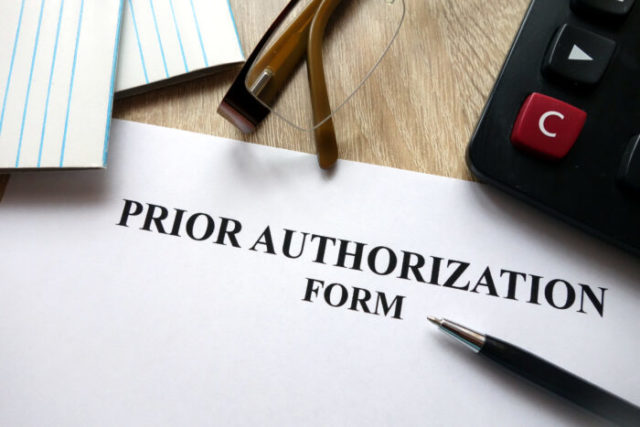
Healthcare policies and regulations are generally enacted with the best of intentions. Ironically, even the best-intentioned programs can create bottlenecks that negatively impact patient care. Prior authorization (PA) – established more than 50 years ago — is one such initiative.
As U.S. healthcare costs continue to climb, regulators, payers, physicians, patients, and other stakeholders continuously seek opportunities to craft and implement ambitious policies to make healthcare more affordable. PA was designed as a cost-savings strategy but has evolved into a hindrance to patients’ access to care and become a process that is often time-consuming, opaque, confusing, and even “onerous,” according to the Medical Group Management Association.
Prior authorization: The backstory
PA, the process of securing an insurer’s approval for medical services or prescription drugs ordered by a provider, was originally intended to control costs and ensure that prescribed drugs or recommended treatments are ‘necessary and appropriate.’ When a PA is required, a patient’s insurance company will not agree to pay for the recommended treatment or drugs until it issues an authorization—which can take hours or days, often leading to treatment delays.
According to a recent AMA survey, 30% of physicians report that PA has led to serious adverse events impacting patients in their care, and 79% say that PA sometimes leads to treatment abandonment. Many physicians also believe that PA undermines their medical authority, while some patients feel the process adds additional limits to their own decision-making about care.
As generally implemented today, many physicians and patients believe that PA can do more harm than good because of the potential to delay access to care, which leads to compromised health outcomes.
Some of the challenges with traditional PA processes include:
- Inconsistent communication channels, including phone, fax, email, text, voicemail, and handwritten notes. A chaotic ad hoc ‘system’ often leads to miscommunication, delays in care, and even medical errors.
- A lack of integration into prescribing workflows and electronic health record (EHR) systems. PA tends to live in silos outside of established electronic workflow and records systems, making it difficult for providers to access critical patient data that helps inform PA decisions. This lack of integration can delay care and compromise patient outcomes. ?
- Excessive administrative time for PA processing. Weekly PA administrative tasks require an average of two business days of physician and staff time that could otherwise be dedicated to patient care. An AMA survey???reports ?that 40% of physicians have two full-time staff dedicated to PA.
Legislation + CMS rules: A Step in the Right Direction
Providers, regulators, patients, and other stakeholders have long demanded an aggressive revision of PA, including greater transparency, accelerated decision-making, and standardization of practices and policies. A proposed CMS rule places new requirements on various Medicaid and CHIP programs and Qualified Health Plans (QHP) issuers to improve the electronic exchange of health care data and streamline processes related to PA. Payers would be required to upgrade their systems to make PA transparent, easy to understand, and accessible to patients and providers by 2023.
In addition, Congress has proposed the Improving Seniors’ Timely Access to Care Act. This bill includes requirements for private insurance companies operating Medicare Advantage plans to establish an electronic prior authorization (ePA) process to approve medical services and drugs more quickly and provisions to increase transparency for beneficiaries and providers.
While both these measures hold promise for improving PA processes for certain populations, the reality is that all patients – regardless of payer – need and deserve similar relief. Patients of all ages and insurance coverage need timely access to care and freedom from the overwhelming red tape that has become synonymous with PA.
A valuable next step would be to automate PA for all payers and incorporate ePA into EHR and prescribing workflows.
How ePA helps
By automating PA processes, patients can receive care sooner, clinicians can make better-informed care decisions, and administrative hassles can be minimized. Electronic PA, according to a 2021 AHIP study, has been found to reduce the mean time from PA request to decision by 69%. In addition, 71% of providers using ePA reported “faster time to patient care.”
Electronic PA automates manual processes, which reduces the potential for errors and saves staff time. Because ePA provides direct connectivity to payers, providers have more complete and up-to-date details about a patient’s benefits within prescribing workflows. With easy access to PA guidelines, clinicians can make more informed decisions that support faster access to care and better patient outcomes.
As the industry considers alternatives for improving PA efficiencies, clinicians need ePA solutions that support existing workflows and provide:
- Full details on the patient’s eligibility profile, including unmet deductible and copay amounts
- In-workflow access to current PA requirements for specific drugs and treatments
- Out-of-pocket costs for alternate therapies at the time of prescribing to support an informed discussion between clinicians and patients
It’s time to give all patients the best possible care by fixing PA
While the initial objectives for PA may have been well-intentioned, the inefficiencies of traditional PA processes negatively impact patient care and hurt clinician productivity. However, by embracing ePA, stakeholders can streamline clinician workflows, support better-informed care decisions, improve transparency for patients and clinicians, and ultimately drive better clinical outcomes.








